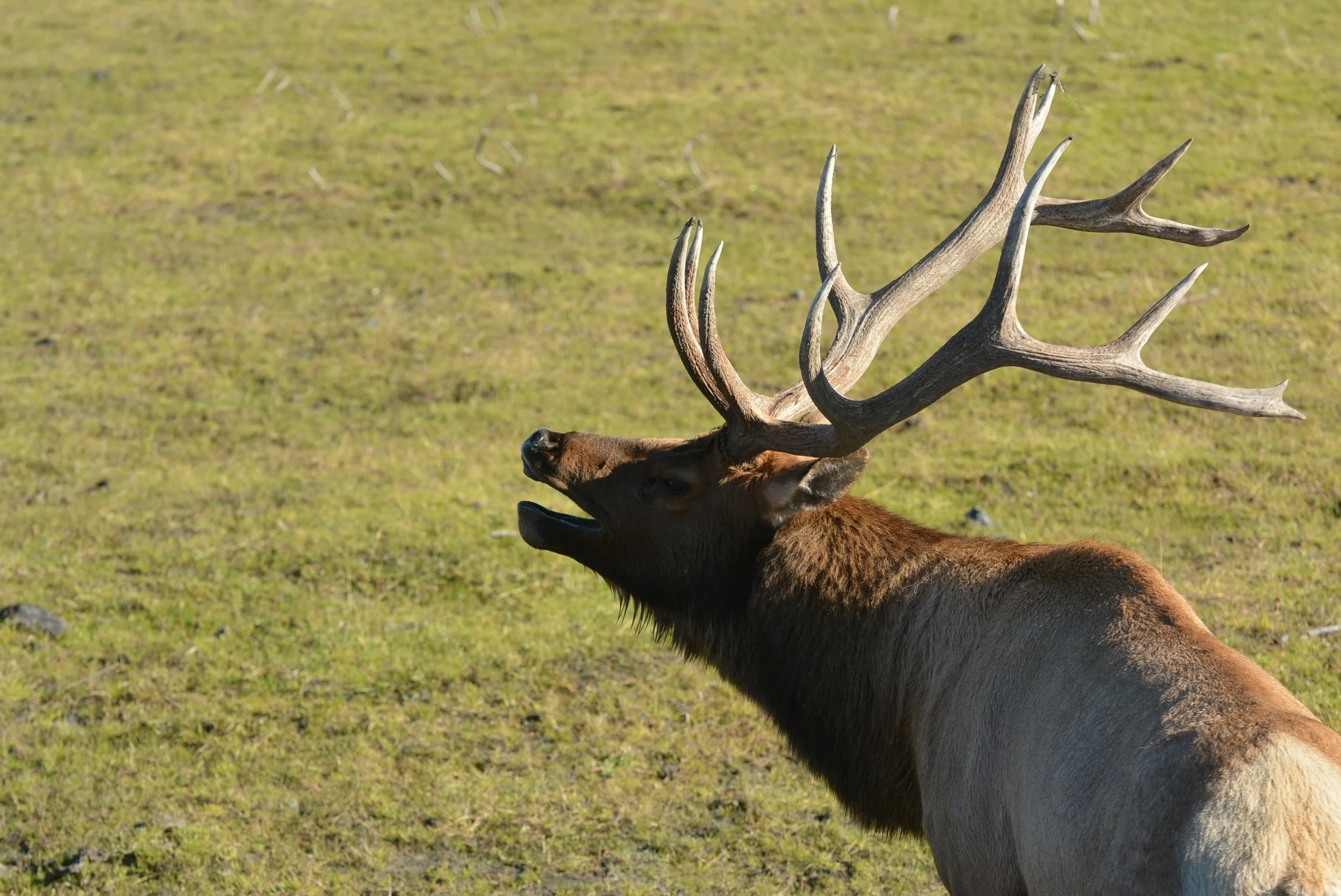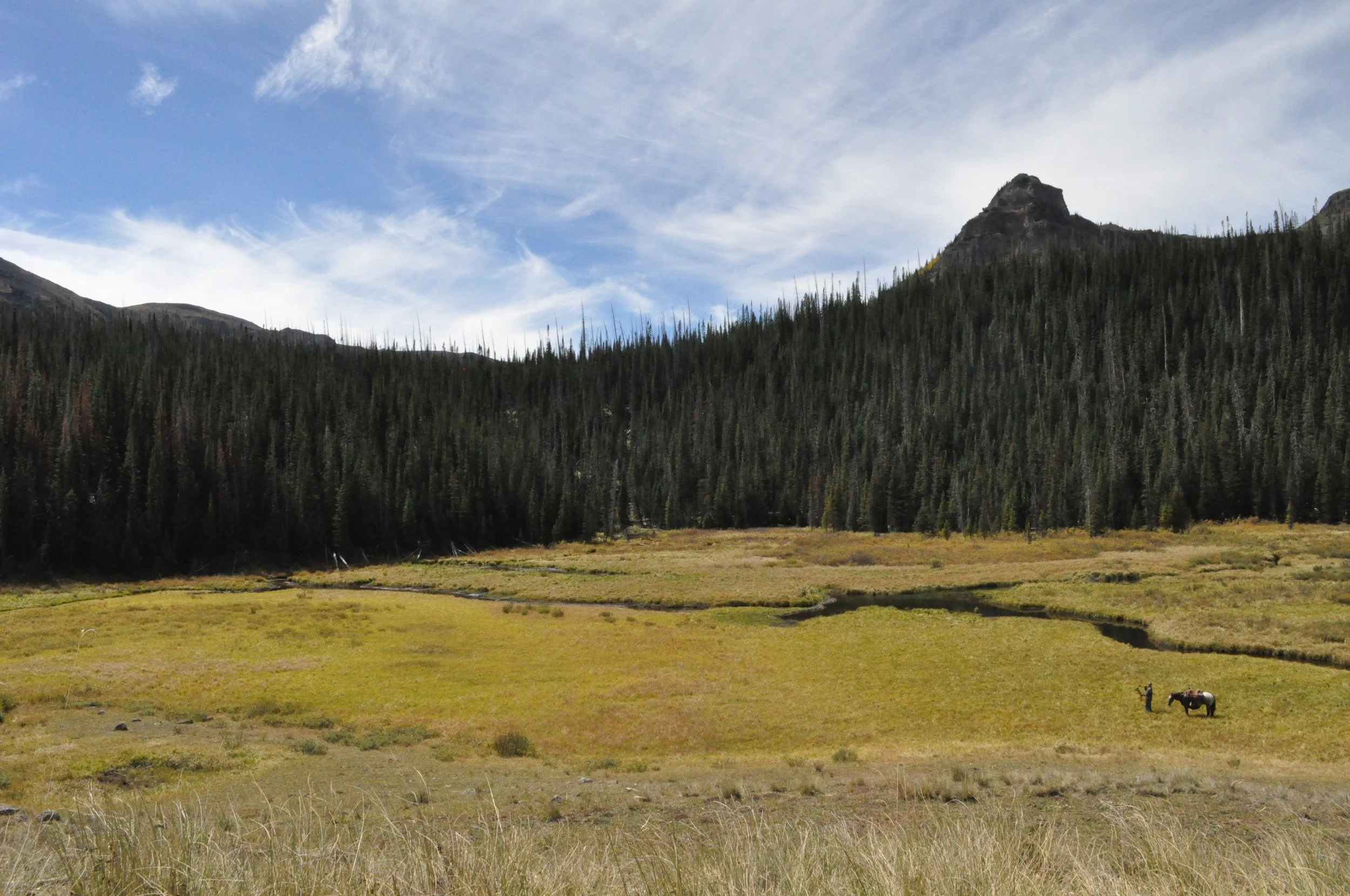Flat Tops Wilderness Elk Hunt
By: Joe Byers
Every archer dreams of hunting elk in the Rocky Mountains, riding on horseback deep into the interior, and matching wits with bugling bulls. I was fortunate enough to experience that dream, and it was everything I hoped it would be. Our camp was deep in the Rocky Mountains on the edge of a wilderness area. The location allowed us to drive to a modern camp and travel five miles into the mountains each day by horseback.
The first day began at 3:30, breakfast at 4:00, in the saddle by 4:30, followed by a two-hour ride into the mountains for a full day of hunting. Around 5:30 that evening we began the trek back to camp. Upon arrival, we ate dinner and hit the sack early to prepare for the next day’s hunt. It was a long day indeed. I was blessed with a very patient guide who would walk 100 yards into the timber, pause and listen intently for a minute or two before moving on. This was not only effective, but enabled me to handle the 10K+ altitude, almost two miles above my what I was used to at home.
At the end of day two, we were beginning to wear out due to the extensive time on horseback, and we asked the outfitter if he would set up a spike camp. He agreed, and what a difference that made. The spike camp allowed us an additional ten miles into the wilderness zone, and that meant we were beyond the walking distance of most hunters. It also meant that if we heard a bugle, we could get to the location quickly. Traveling by horseback is exciting, but hours of riding in darkness quickly took their toll. One hunter fell from his horse in the pitch black. He was lucky not to injure himself or damage his bow.
Elk bugled sporadically, but lacked the emotion needed to make them vulnerable. My hunting partner was Curt Wells of Bowhunter Magazine and the Bowhunter TV show. On several occasions we made stalks and set ambushes while our guide called or bugled, but the wind gave us away. These encounters gave the two of us a chance to experience the peace and solitude of distant mountains. As the third day closed, the hunt was half over, but the spike camp allowed us to stay motivated and in the game. Our meals were basic meat and potatoes, not as fancy as they would have been back at base camp, yet they gave us plenty of energy to get up with excitement each day.
Our guide, Wells, and I headed for a different mountain on day four, and we soon heard a series of bugles as daylight broke. Bulls were bugling aggressively, and we were able to ride within half a mile, sneak in below them, and take advantage of the morning thermals.
Daylight had fully arrived by the time we approached the elk, and our guide suggested that we split up and sneak ahead while he stayed behind and cow called. Few sounds in nature are more exciting than the sound of a rutting bull elk, and I slipped through the timber toward one particularly vocal bull.
Suddenly, I saw a flash of an elk moving toward me, and I stepped behind a small pine to allow it to pass by. I gripped my Mathews bow and waited for a shot. As soon as the bull was moved past me, it stopped and bugled again. I instantly drew my bow, estimated the range, and let my arrow fly.
The shot felt good, although I couldn’t see the arrow strike through the veil of evergreen branches obscuring my vision. The bull ran directly into a small valley toward Wells and then broke into the open back into my line of sight. Then it stumbled, fell backward, and lay still, the effect of a double lung shot causing a quick and ethical demise.
The three of us met at the bull, exchanged handshakes, and took pictures of the animal. Since the kill happened so early in the day, our guide radioed back to camp and requested a wrangler come to pack out the meet. While Wells and the guide continued to hunt, I remained with the bull and helped the wrangler quarter and pack it out.
Day five began. Since I had my tag punched, I spent the day in camp while everyone else hunted. Fortunately, the stream the flowed just below camp teamed with cutthroat trout. Thankfully I brought a fly rod and flies for just such an occasion. As if relishing in the joy of a successful wilderness elk hunt wasn’t enough, I had all day to fly fish as much as I wished.
I quickly learned that these fish were very wary. The only way to cast to them in the crystal-clear water was from well back from the stream’s edge or to crawl on hands and knees to keep a low silhouette. I lost count of how many fish I landed, but I my plan was to keep one for each member of the group. When they arrived back in camp that evening, I had the fish freshly fried.
The next day, we broke camp and experienced the classic string of pack horses moving camp. The hunt had truly been one of the best adventures of my life, and many days would pass before the enjoyment of the quest absorbed into my soul. In my opinion, with decades of experience under my belt, an archery elk hunt is the most exciting hunt a person can take in North America.
Have you had a great out experience? Join Global Outdoors and write a review to tell everyone about it! We’re building the home for trusted reviews of outdoor experiences, outfitters, and guides.













